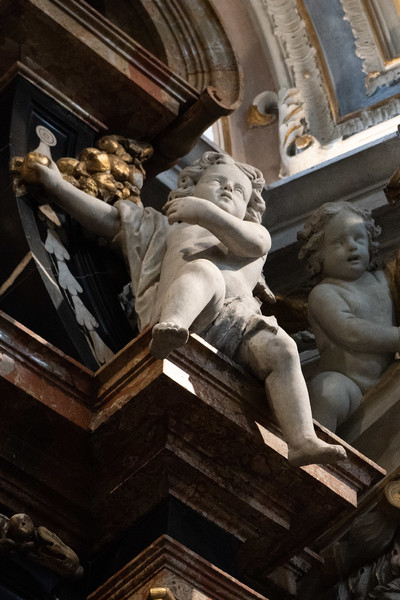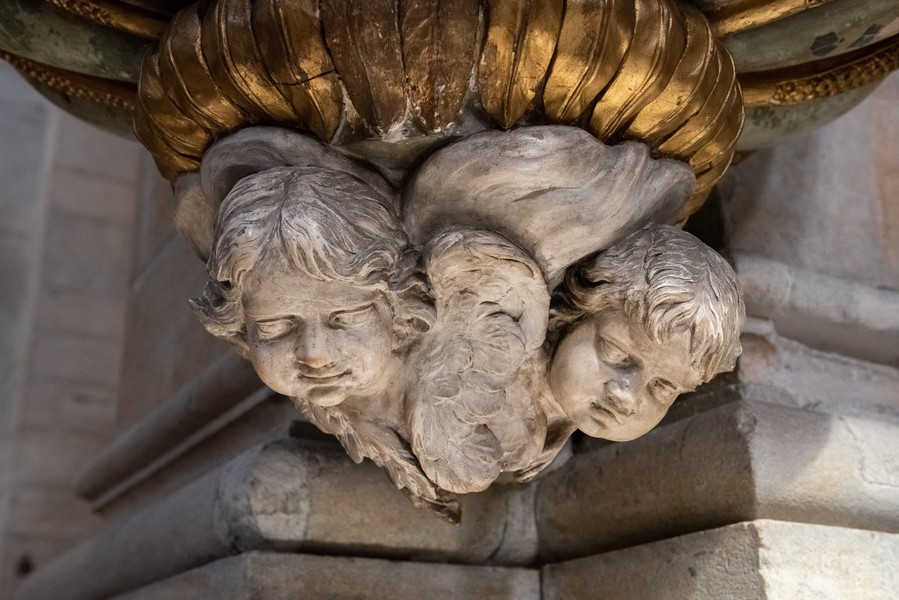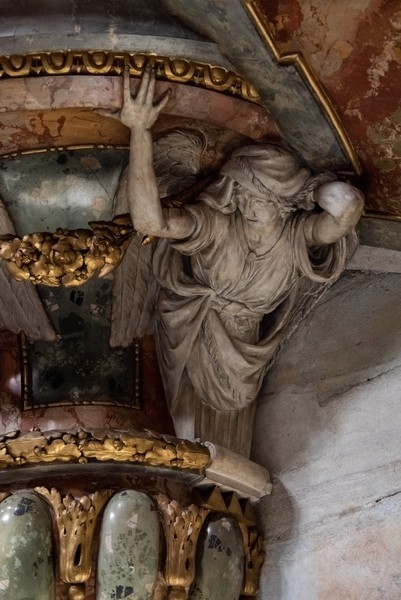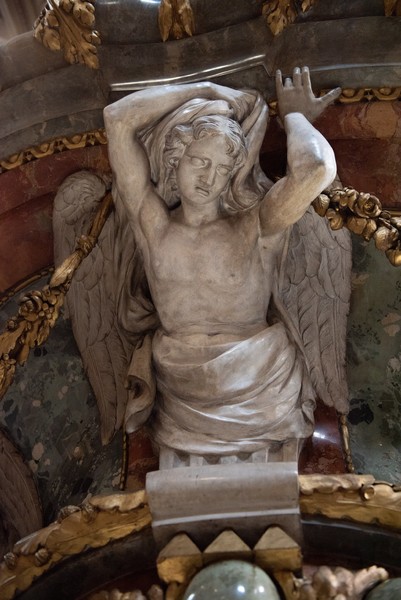Chapel of Corpus Christi
The stucco decorations divide the spaces of the chapel rationally, creating frames for the paintings. The work was not complex, not demanding particular technical or executive expertise. Some parts were made freehand, other more regular sections involved the use of moulds, with hand work for finishing. Along with the simpler decorative elements, the figurative works of Isaiah and David resting on the extrados of the entrance arch, and the putti below, are all attributed to the stucco workers of 1596 (Fig. 1, 2, 3, 4, 5).
Chapels of Saint Anne and the Nativity
Barberini used a traditional technique, overlaying the mortar very carefully and devoting particular care to the final layer, so that his works would look as if they were made of marble (Fig. 6), (Fig. 7, 8). His ornamental repertoire is much richer and more varied than that of the mannerist style seen in the 16th-century chapel of Corpus Christi. With stucco, Barberini creates not only the cornices, but extends to a complete and typically baroque apparatus, where figures, decoration and architecture interact and blend.
The figures resting on the arches are in high relief, but give the impression of being three-dimensional (Fig. 9, 10, 11) due to their very strong projection. Here Barberini works to overcome the constraints posed by the architecture and the bottom-up viewpoint. To do this, the artist uses various devices. He carefully designs the structural reinforcements necessary to support such pronounced projections, and as can also be seen in works by Agostino Silva, arranges the figures in three-quarter profile: an illusionistic ruse that amplifies the depth of the space.
The sequence of arches that punctuate the nave has also been exploited to attain effects of depth, guiding the observer's gaze in particular towards the 18th-century stucco crowning of the triumphal arch, with highly theatrical effect. On the other hand, the link between architecture and decoration is lost in the window frames, where the putti seem to float in otherwise empty and flat wall spaces.
Pulpit
The pulpit is not made with polished stucco, as has often been stated, but in scagliola, which is a technique that imitates marble using a mixture of plaster, glue and pigments. The caryatids and bas-reliefs of the parapet, however, are indeed made of stucco. The overall result is an exemplary ensemble, demonstrating the very thorough knowledge of the artist in materials and technique, necessary for the complex and delicate technique of scagliola, as well as in detailed structural planning (Fig. 12, 13, 14, 15, 16, 17, 18, 19).





































